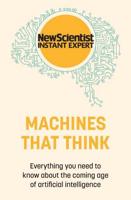Publisher's Synopsis
Weareverypleasedtopresenttheproceedingsofthe4thInternationalCognitive Vision Workshop,held as part of the 6th InternationalConference on Computer Vision Systems on Santorini,Greeceduring May12-15,2008.The aim of ICVW 2008 was to document the progress of the relatively young ?eld of cognitive computer vision, bringing together researchers working and interested in this ?eld and giving them a platform to discuss the results of the di?erent European cognitive vision projects as well as international projects in this area. Original research papers were solicited in all aspects of cognitive vision, targeting the following areas in particular: - Memory: The coupling between visual perception, tasks, knowledge and the visualsystemrequiresmemory.Issuesthatareofspecialimportanceforin- grating memory into vision systems include: how to manage representations with limited resources;modelfor attention;integrationofinformationacross representations and time. - Learning and Adaptation: A system whose goal is that of interacting with the real world must be capable of learning from experience and adapting to unexpected changes. Also, there is a need for integration of multiple - sual features to enable generation of stable hypotheses, and for methods for combination of cues in the presence of uncertainty. - Categorization: Research has in particular focused on recall of speci?c - ject instances, events and actions. Whereas recently some progress has been achieved in systems that allow limited recognition of object classes, events and scenes across visual appearance, new methods are needed to enable abstractions and e?ective categorization across variations in color, surface markings, geometry, temporal scenes, context and tasks.












